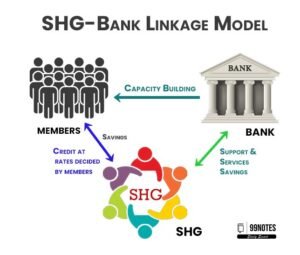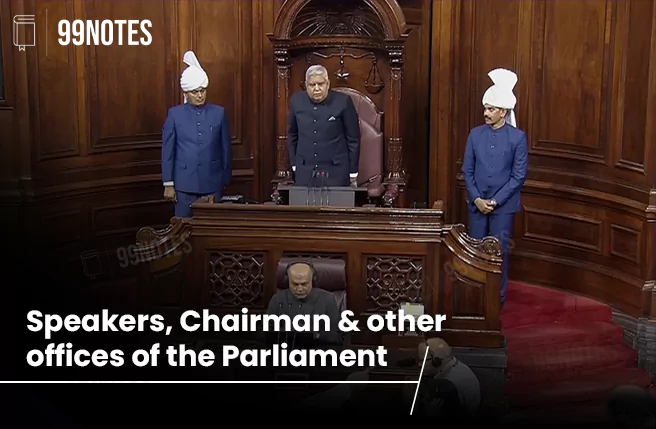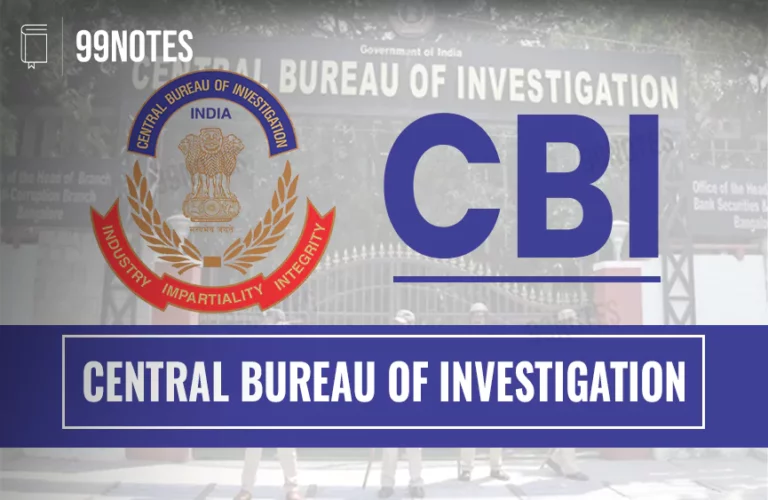MICROFINANCE INSTITUTIONS (MFIS)
- Importance of MFIs in Governance
- Regulatory Framework & Governance Mechanisms
- MFIs & Financial Inclusion
- Governance Challenges in MFIs
- Role in Poverty Alleviation & Rural Development
- Government Schemes & Policy Support
- Public-Private Partnerships (PPPs) in Microfinance
- Related FAQs of MICROFINANCE INSTITUTIONS (MFIS)
Microfinance Institutions (MFIs) are financial entities that provide small loans, savings, insurance, and financial services to low-income individuals excluded from the formal banking system. They primarily serve rural poor, women, and micro-entrepreneurs through models like Self Help Groups (SHGs) and Joint Liability Groups (JLGs), working under RBI regulations. MFIs are central to India’s financial inclusion mission and play a key role in social and economic empowerment.
In the context of governance, MFIs act as catalysts for participatory and inclusive development. They strengthen democratic values at the grassroots by organizing communities, encouraging self-reliance, and supporting decentralized planning. By bridging the gap between policy and people, MFIs reinforce transparency, accountability, and community-led growth.
Importance of MFIs in Governance
Microfinance Institutions (MFIs) play a crucial role in strengthening grassroots governance by empowering marginalized communities with access to financial services. They promote participatory development by enabling financial independence, especially among rural populations and women. Through credit, savings, and support services, MFIs foster local leadership, reduce poverty, and enhance socio-economic inclusion.
1. Promote Financial Inclusion – MFIs offer credit and savings to the unbanked, helping them enter the formal financial system. This reduces dependence on informal lenders and aligns with Jan Dhan Yojana and PM SVANidhi. Financial inclusion is a foundational pillar of inclusive governance.
2. Empower Women and Marginalized Groups – By targeting women and SC/ST groups through SHGs, MFIs boost financial independence and self-confidence. This promotes gender equity, social dignity, and political awareness. Many women go on to lead Panchayats and community institutions.
3. Support Livelihoods and Self-Employment – MFIs fund micro-businesses like tailoring, farming, and vending, helping rural youth and women earn sustainably. This reduces migration and strengthens local economies. It supports the Atmanirbhar Bharat and rural development agenda.
 4. Strengthen Grassroots Democracy – Through collective platforms like SHGs and federations, MFIs promote civic engagement and leadership training. These groups often demand better governance and entitlements. MFIs thus build both economic and social capital.
4. Strengthen Grassroots Democracy – Through collective platforms like SHGs and federations, MFIs promote civic engagement and leadership training. These groups often demand better governance and entitlements. MFIs thus build both economic and social capital.
5. Aid in Poverty Alleviation – Microloans allow the poor to invest in productive assets and reduce their reliance on moneylenders. Regular income and asset creation help break the poverty cycle. This directly contributes to SDG 1 (No Poverty) and SDG 8 (Decent Work).
6. Encourage Good Governance Practices – MFIs promote transparency, accountability, and community monitoring in financial dealings. Peer group pressure ensures loan repayments and builds discipline. These micro-level practices echo macro-level good governance values.
7. Complement Government Schemes – MFIs partner with schemes like MUDRA, NRLM, and PM Awas Yojana to expand outreach. Their grassroots presence ensures last-mile delivery and greater impact. This public-private synergy improves governance efficiency.
Regulatory Framework & Governance Mechanisms
The regulatory framework and governance mechanisms for Microfinance Institutions (MFIs) ensure transparency, financial stability, and protection of borrower interests. In India, these frameworks have evolved under the supervision of the Reserve Bank of India (RBI) and other bodies to promote responsible lending practices. A strong governance structure is crucial to maintain public trust, institutional integrity, and the long-term sustainability of the microfinance sector.
1. RBI as the Primary Regulator – The Reserve Bank of India regulates NBFC-MFIs under the Master Directions on Regulation of Microfinance (2022), which ensures uniformity across all lenders providing microfinance loans.
2. Uniform Regulatory Framework (2022) – The RBI introduced a harmonized regulatory framework across banks, NBFCs, and MFIs, including guidelines on interest rate transparency, repayment obligations, and borrower protection.
3. Interest Rate Cap Removal – While earlier MFIs were bound by interest rate caps, the 2022 framework removed it but mandated greater transparency and disclosure to avoid exploitation of borrowers.
4. Credit Limit & Repayment Burden Norms – The RBI has set norms to ensure that total loan repayment obligations of a borrower do not exceed 50% of their household income, protecting against over-indebtedness.
5. Code of Conduct for MFIs – Industry associations like Sa-Dhan and MFIN (Microfinance Institutions Network) have developed voluntary codes of conduct to ensure ethical practices and grievance redressal mechanisms.
6. Internal Governance Structures – MFIs are required to establish boards with independent directors, regular audits, and risk management systems to ensure accountability and transparency in operations.
7. Client Protection Measures – Regulations mandate clear loan terms, consent-based collections, and avoidance of coercive recovery tactics to protect borrower dignity and rights.
8. Grievance Redressal System – MFIs must maintain a formal mechanism for customer complaints with escalation to the RBI Ombudsman if unresolved, ensuring client-centric governance.
 MFIs & Financial Inclusion
MFIs & Financial Inclusion
Microfinance Institutions (MFIs) promote financial inclusion by providing small, collateral-free loans to low-income and underserved groups. In rural and remote areas of India, they empower women, small entrepreneurs, and marginalized communities, bridging the gap between formal banks and the financially excluded, thus fostering inclusive growth.
1. Access to Credit for the Unbanked – MFIs provide credit facilities to individuals who lack access to traditional banks due to the absence of collateral, formal income proof, or low credit history, thus broadening the financial ecosystem.
2. Promotion of Women Empowerment – A significant portion of microfinance clients are women, and access to credit helps them start businesses, contribute to household income, and gain financial independence.
3. Encouragement of Self-Employment – MFIs support small-scale entrepreneurs and artisans by providing them with working capital, which boosts income generation and promotes local economic development.
4. Support for SHGs and JLGs – MFIs work closely with Self-Help Groups (SHGs) and Joint Liability Groups (JLGs), which enhance community-based lending and reduce default risks through mutual accountability.
5. Financial Literacy & Awareness – Along with lending, MFIs often conduct financial literacy programs, helping borrowers understand budgeting, savings, and repayment responsibilities.
6. Complementing Government Initiatives – MFIs align with schemes like Jan Dhan Yojana and MUDRA by supplementing credit access at the grassroots level, enhancing the overall impact of financial inclusion efforts.
7. Savings and Insurance Products – Beyond loans, many MFIs also provide micro-savings, micro-insurance, and pension products, contributing to the financial resilience of poor households.
8. Rural Development & Poverty Reduction – By enabling financial access, MFIs help reduce poverty levels and stimulate rural economies, making financial inclusion a tool for equitable development.
Governance Challenges in MFIs
MFIs drive grassroots financial inclusion but face governance issues due to rapid growth, weak controls, and limited ethical oversight, especially in rural areas. Strong governance is essential to protect borrowers and ensure institutional integrity.
1. Over-Indebtedness and Multiple Lending – In the absence of a unified borrower database, clients often take multiple loans from different MFIs, leading to repayment stress and default, which undermines the purpose of microfinance.
2. Weak Institutional Governance – Many MFIs lack professional board structures, independent audits, and accountability systems, resulting in poor decision-making and operational inefficiencies.
 3. Coercive Recovery Practices – Aggressive loan recovery methods by field agents, especially under pressure to meet targets, have led to borrower harassment and social unrest in some regions.
3. Coercive Recovery Practices – Aggressive loan recovery methods by field agents, especially under pressure to meet targets, have led to borrower harassment and social unrest in some regions.
4. Mission Drift Due to Commercialization – With the entry of profit-oriented players, some MFIs are shifting focus from poverty alleviation to profit-maximization, compromising their social mandate.
5. Lack of Effective Grievance Redressal – Borrowers often do not have access to clear complaint mechanisms, which affects transparency, trust, and customer satisfaction.
6. Regulatory and Political Challenges – State-level political interventions like loan waivers and inconsistent regulatory enforcement can disrupt repayments and distort market discipline.
Role in Poverty Alleviation & Rural Development
Microfinance Institutions (MFIs) play a key role in reducing poverty and promoting rural development by providing financial services to the unbanked. In India, they empower people to create sustainable livelihoods and enhance their economic participation. Their localized, community-based approach allows targeted support for vulnerable groups.
1. Income Generation and Employment Creation – MFIs provide small loans that help rural individuals start or expand micro-enterprises, leading to self-employment, increased household income, and reduced reliance on seasonal agriculture.
2. Asset Building and Economic Security – Access to micro-credit enables poor families to acquire productive assets like livestock, tools, or land inputs, which enhance their economic resilience over time.
3. Women’s Empowerment – A large share of MFI beneficiaries are women, whose access to financial resources boosts their decision-making power in households and communities, promoting gender equity in development.
4. Local Infrastructure and Service Development – The financial activities supported by MFIs often stimulate local markets, improve service delivery, and foster infrastructure growth through increased economic activity.
5. Reduction in Informal Debt Dependency – By offering formal and affordable credit, MFIs reduce the poor’s dependence on moneylenders, thereby protecting them from exploitative interest rates and debt traps.
6. Social Capital and Community Participation – MFIs promote group-based lending through SHGs and JLGs, which strengthens community bonds, encourages mutual support, and enhances participation in local governance.
Government Schemes & Policy Support
The Government of India has actively promoted Microfinance Institutions (MFIs) through a range of schemes and policy initiatives to enhance financial inclusion, poverty alleviation, and rural development. These interventions aim to create an enabling ecosystem for MFIs while safeguarding the interests of borrowers and aligning microfinance with national development goals.
1. National Rural Livelihoods Mission (NRLM) – NRLM promotes SHG-based microfinance by linking women’s groups with banks and MFIs, providing capacity-building and credit support for sustainable livelihoods in rural areas.
2. Pradhan Mantri MUDRA Yojana (PMMY) – Under this scheme, MUDRA loans are provided to small and micro-enterprises through MFIs, NBFCs, and banks, supporting non-corporate entrepreneurs in manufacturing, trading, and services.
 3. Priority Sector Lending (PSL) Guidelines – The Reserve Bank of India mandates banks to lend to MFIs under PSL, ensuring that credit flows to underserved sectors like agriculture, small enterprises, and weaker sections.
3. Priority Sector Lending (PSL) Guidelines – The Reserve Bank of India mandates banks to lend to MFIs under PSL, ensuring that credit flows to underserved sectors like agriculture, small enterprises, and weaker sections.
4. SHG–Bank Linkage Programme (SBLP) – Initiated by NABARD, this program connects Self-Help Groups with formal banking systems, with MFIs playing a key role in nurturing and financing SHGs.
5. RBI’s Microfinance Regulatory Framework (2022) – The revised guidelines promote borrower protection, remove interest rate caps, emphasize responsible lending, and allow greater operational flexibility for MFIs.
6. Digital India & Financial Inclusion Drives – Government-led digitization initiatives have helped MFIs adopt digital platforms for credit delivery, repayment, and monitoring, enhancing their reach and efficiency in remote areas.
Public-Private Partnerships (PPPs) in Microfinance
Public-Private Partnerships (PPPs) play a vital role in scaling up microfinance services by leveraging the strengths of both government institutions and private sector players. These collaborations enhance the outreach, efficiency, and sustainability of microfinance operations, especially in underserved and remote areas. PPPs ensure the mobilization of resources, technical expertise, and innovative models for inclusive financial development.
1. Collaborative Financing Models – Governments and development banks often provide financial backing or guarantees to MFIs operated by private entities, thereby encouraging greater credit flow to the poor.
2. Capacity Building and Training Support – Public agencies partner with private MFIs to conduct financial literacy, entrepreneurship development, and skill training programs, especially for women and youth.
3. Technology Integration – PPPs help digitize microfinance delivery through mobile banking, e-KYC, and fintech platforms, enhancing transparency, reducing costs, and increasing rural access to credit.
4. Infrastructure and Ecosystem Development – Through PPPs, MFIs benefit from shared infrastructure such as common service centres, data hubs, and regulatory sandboxes, improving their operational capability.
5. Pilot Projects and Innovation Labs – Governments collaborate with private sector innovators to launch pilot projects in digital lending, alternative credit scoring, and impact-based finance, improving targeting and outcomes.
| Global Best Practices & Governance Models |
|
Globally, several countries have demonstrated successful microfinance models that offer valuable lessons for improving governance, outreach, and sustainability of MFIs in India. These best practices reflect innovations in regulation, client protection, digital finance, and institutional transparency, which can be adapted to enhance India’s microfinance ecosystem. 1. Bangladesh – Grameen Bank Model: Known for its group-based lending without collateral, Grameen Bank emphasizes peer monitoring, repayment discipline, and women-centric loans—showcasing a scalable, people-driven approach to poverty alleviation. 2. Philippines – Strong Regulatory Oversight: The Bangko Sentral ng Pilipinas (BSP) has created a supportive regulatory environment for MFIs by integrating them into the broader financial system and encouraging innovations in microinsurance and mobile banking. 3. Kenya – Mobile Money Integration: Platforms like M-Pesa revolutionized access to microfinance by integrating mobile payments with lending and savings services, especially for rural and low-income populations. |
Conclusion
Microfinance Institutions (MFIs) have become indispensable tools for inclusive growth, poverty alleviation, and rural development. Their ability to extend financial services to the unbanked and empower vulnerable communities, especially women, highlights their transformative potential in grassroots governance.
However, to sustain and scale their impact, it is crucial to strengthen governance structures, ensure regulatory compliance, and encourage innovations through public-private partnerships. Learning from global best practices and aligning with national development goals can further enhance the effectiveness of MFIs, making them key drivers of equitable and sustainable development in India.
Related FAQs of MICROFINANCE INSTITUTIONS (MFIS)
Microfinance Institutions (MFIs) play a crucial role in India’s governance by promoting financial inclusion, empowering rural women, and supporting self-employment among the poor. They strengthen grassroots democracy by fostering collective action through SHGs and JLGs, reduce poverty, and complement government schemes like NRLM and MUDRA. MFIs act as key instruments for inclusive growth and rural development.
In India, Microfinance Institutions are regulated primarily by the Reserve Bank of India (RBI) under the Master Directions on Regulation of Microfinance (2022). This framework ensures transparency in lending, borrower protection, ethical recovery practices, and financial discipline. Additionally, industry bodies like MFIN and Sa-Dhan enforce codes of conduct and client grievance mechanisms.
MFIs are financial institutions that provide small loans and financial services to low-income groups. SHGs (Self-Help Groups) are informal community-based savings and credit groups, mostly women-led. JLGs (Joint Liability Groups) are small groups where members mutually guarantee loan repayment. While SHGs and JLGs form borrower groups, MFIs act as the lending institutions supporting them.
MFIs in India face governance challenges like over-indebtedness of borrowers, multiple lending without proper databases, coercive recovery practices, regulatory compliance burdens, political interference, and mission drift towards commercialization. Strengthening internal governance, ethical lending, and borrower protection are essential for sustainable microfinance operations.
MFIs drive financial inclusion by offering collateral-free loans, savings, and insurance products to the unbanked rural poor. They empower women entrepreneurs, support small businesses, reduce reliance on informal moneylenders, and help families build assets. By enabling self-employment and boosting rural economies, MFIs play a direct role in poverty reduction and inclusive development in India.







